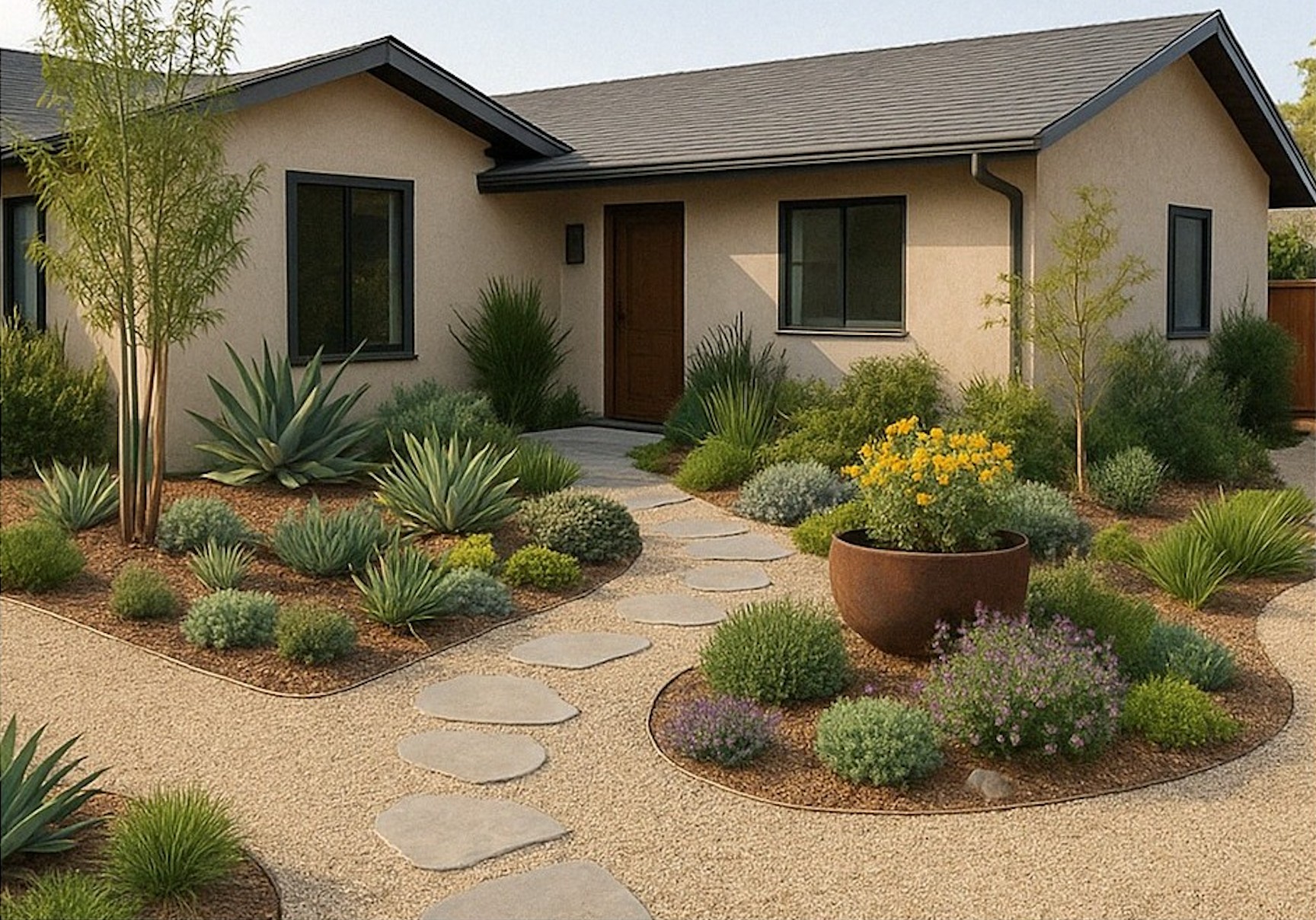Rethinking the Lawn in a Drought-Prone City
In San Diego, water conservation isn’t just a good idea — it’s a way of life. With frequent drought conditions, rising water costs, and stricter local ordinances, many homeowners are trading in their thirsty grass lawns for smarter, drought-resistant alternatives. Fortunately, lawn-free doesn’t mean lifeless. Let’s look at some stunning, low-maintenance options that can transform your yard while dramatically cutting water use.

Why Replace Your Lawn?
Traditional turf grass consumes thousands of gallons of water every year, especially in arid climates like San Diego’s. Replacing grass with drought-tolerant materials not only reduces water bills, but also lowers maintenance time and supports local ecosystems. Some homeowners even qualify for turf replacement rebates through state or city programs.
Top Drought-Resistant Lawn Alternatives
- Artificial Turf: A popular low-maintenance solution that mimics real grass without the watering. Great for play areas and pet zones.
- Dymondia: A silver-green groundcover that thrives in sun and light foot traffic. It stays low, spreads easily, and resists drought once established.
- Kurapia: A flowering groundcover that needs less than 60% of the water used by regular turf. It blooms with tiny white flowers and suppresses weeds naturally.
- Decomposed Granite (DG): Used in walkways, patios, or as a full lawn replacement. It creates a clean, modern aesthetic with minimal upkeep.
- Native Grasses: Mow-less options like Buffalo Grass or Carex pansa look natural and provide habitat for beneficial insects and birds.
Designing a Lawn-Free Landscape
Going grass-free opens up exciting design opportunities. Mix hardscape and softscape elements — think gravel paths, flagstone patios, raised planters, and native succulents. Use mulch or bark around trees and shrubs to lock in moisture and reduce runoff. Even small yards benefit from layered planting, texture, and seasonal color.
Cost and Maintenance Comparison
While artificial turf may have higher upfront costs, it often pays for itself in 3–5 years through water savings and zero mowing. Groundcovers like Kurapia and Dymondia are less expensive to install and have softer, more natural appearances. Most drought-tolerant options require minimal pruning and once-a-week watering at most during summer months.
Low Water, High Style
From colorful succulents to low-profile grasses and gravel mosaics, there’s no shortage of creative ways to ditch your lawn and embrace San Diego’s climate. Whether your priority is saving water, lowering maintenance, or creating curb appeal — the right drought-resistant solution is out there.
Ready to make the switch? Explore more tips in our April Yard Checklist for San Diego or subscribe to get local advice sent to your inbox each week.

